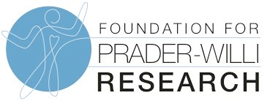Many individuals with PWS experience significant disruption of daily life as a result of sleep issues. Daytime sleepiness, abnormal REM sleep, narcolepsy, and cataplexy are common sleep-related symptoms of PWS, however their underlying cause is unknown.
We had the privilege of having Dr. Thomas Scammell from Harvard Medical School join us at our FPWR conference this year. In his presentation, "Sleep in PWS: Clinical and Scientific Perspectives" (see video below), reviews the sleep challenges in PWS, how they are addressed, and what we have learned about sleep from studying animal models of PWS. Dr. Scammell was awarded FPWR research funds in 2015 for the project "Mechanisms of sleepiness and other sleep abnormalities in a mouse model of Prader-Willi Syndrome" and results were presented at the recent IPWSO conference in Toronto. Current work on the "Wake promoting effects of oxytocin" is also supported by an FPWR grant.
“It’s certainly clear that sleep issues are a real problem in people with Prader-Willi,” began Scammell. He drew from surveys to show the scope of this problem: 50-90% of PWS individuals show daytime sleepiness; about 70% have sleep apnea or other breathing problems; and about 20% have episodes resembling cataplexy (“sudden episodes of muscle weakness that is brought on by strong emotions”). While cataplexy does not in itself constitute an example of sleep, it does share a common basis with narcolepsy, which Scammell feels may hold some valuable clues for understanding sleep in PWS, which was addressed later in his talk.
Scammell focused first on the evidence of extended sleep in PWS. Whereas the general population needs approximately 7-8 hours of sleep per day, he reported that about 50% individuals with PWS sleep more than 8 hours, with 20% sleeping more than 10 hours. Possible explanations for the need for more sleep in PWS, Scammell offered, reside in the disruptions to nighttime sleep in PW individuals, caused by: sleep apnea; the inability to initiate sleep due to anxiety, OCD or other behavioral issues; early morning awakenings due to depression or behaviors; and possibly blunted circadian rhythms of sleep.
Scammell then turned to the topic of daytime sleepiness in PWS, which has been measured in the PWS population both in questionnaires and objectively, with the Multiple Sleep Latency Test. Although daytime sleepiness is clearly evident, more clinic studies must be pursued before definitively determining a cause. Some the possible reasons, put forth by Scammell and reflecting some factors noted above, include poor nighttime sleep (due to sleep apnea), a blunted circadian promotion of wake, and reduced orexin signaling in the brain. Extremely low orexin levels are found in narcolepsy. The moderately low levels detected in PWS might lead to, Scammell posited, “a mild or partial narcolepsy.”
Before looking more closely at the basis of and treatments for sleep apnea and low orexin levels – as two of the potentially most prominent causes of daytime sleepiness in PWS -- Scammell paused briefly to remind us of the many levels at which insufficient sleep affects the body. While using available evidence from the typical population, Scammell noted “I think you’ll see that a lot of these specific things that have been studied so much […] resonate in the Prader-Will population.” Specifically, Scammell pointed to four main levels of the body’s function affected by insufficient sleep. The first is the cognitive level, and includes poor executive function (encompassing working memory, impulse control and judgment); inattentiveness; mood (depression or poor emotional regulation); and -- specifically in children – hyperactivity and irritability. Secondly, obesity may be exacerbated by a lack of sleep, since leptin levels are lower and ghrelin higher, resulting in an increased appetite, particularly for foods high in fat and carbohydrates. Lastly, Scammell cited insufficient sleep’s adverse effects on the sympathetic tone, leading to increased heart rate and blood pressure, as well as on the immune system.
Noting the prevalence of at least mild sleep apnea in the PWS population, Scammell urged “sleep apnea is something that probably should be at least discussed in pretty much anyone who has got Prader-Willi.” The snoring, pauses in breathing and occasional gasps during sleep observed may be linked to one of two forms of the condition. The more common form, obstructive sleep apnea, may be caused by a thick neck (obesity), crowded airway, large tonsils, or nasal congestion – and can we worsened by scoliosis. By contrast, in central sleep apnea, there is a “central nervous system problem” presenting as “poor effort to breath, even while the airway is open,” explained Scammell, adding that “this may tie in with the issue of poor muscle tone.”
After the PWS patient is diagnosed with sleep apnea – a condition often detected when young patients undergo a preliminary sleep study before beginning on growth hormone treatment – an array of options is available for treatment. Just as in the general population, they include tonsillectomy, continuous positive airway pressure (CPAP), a dental device, or weight loss. Particularly when the sleep apnea is severe, “there is no question it should be treated.” However, the challenge noted by Scammell lies when the sleep apnea is mild: “sometimes it’s a question of how much benefit is be gained by treating the mild sleep apnea versus the grief of the treatment.”
After dealing with the important and more widely-known impact of sleep apnea on the PWS population, Scammell presented an enigma that sometimes arises in the treatment of sleep issues in these patients. “Here’s the mystery: even though sleep apnea is common in Prader-Willi, even when it’s treated seemingly in an optimal way, the sleepiness often persists.” In other words, sleep apnea appears to only account for part of the explanation for daytime sleepiness in PWS. “This is where […] a connection to narcolepsy comes in,” asserted Scammell, who is himself an expert in this condition. Whereas orexin levels are very low in classic narcolepsy, he explained, they are moderately low in PWS patients. (Orexin works as a signaling molecule in the brain that regulates wakefulness.) Scammell cited not only daytime sleepiness, but also abnormal REM sleep and cataplexy-like episodes as common to both PWS and narcolepsy. “My current impression of all of this is that what we are seeing in Prader-Willi is kind of a mild, partial narcolepsy.”
Scammell cited a mouse study, designed to explore sleep abnormalities in PWS by designing mice that have an inactive Magel2 gene – one of the several genes inactive in PWS. Such mice not only showed low orexin levels, among several other traits common to PWS patients, but they also exhibited irregular sleep patterns. A separate study, which isolated one of the SNORD genes also linked to PWS, illustrated complementary findings. Scammell cautioned for the need to consider the influence of other genes for fully understanding sleep abnormalities in the PWS population, and also noted the importance of examining oxytocin levels for their role in regulating wakefulness.
Lastly, Scammell addressed the range of treatment options to counter the daytime sleepiness resulting from decreased orexin levels. Currently, the amphetamines that are marketed to combat sleepiness in the typical population, such as Ritalin or Adderall, are not suitable for PWS patients. “I think the concern about worsening behavioral problems is one of the great barriers to using these types of medicines.” By contrast, Modafinil (Provigil) [together with Amodafinil (Nuvigil), its more concentrated version] has been effective with very few side effects. “In general, it’s a well-tolerated medicine.” The one caveat offered by Scammell is that while Provigil and Nuvigil have proven effective for mild to moderate daytime sleepiness, they are sometimes not strong enough to combat severe daytime sleepiness. In addition to these options, a drug called Pitolisant, designed to increase histamine levels, is in investigational studies and currently unavailable in the US or Canada. More research is needed to test Pitolisant’s safety and effectiveness.
Beyond such treatments, Scammell indicated that the goal is to “come up with an agonist, a drug that mimics the effects of the natural orexin.” While some pharmaceutical companies are funding the exploration of this option, questions remain about its safety, and extensive medical trials would be needed before such a treatment would be available to the public.
Dr. Scammell is a Professor in Neurology at Harvard Medical School, Beth Israel Deaconess Medical Center, and Boston Children’s Hospital. He is a Deputy Editor of SLEEP and serves as an ad hoc reviewer for Neuron, Journal of Neuroscience, the New England Journal of Medicine, and the Annals of Neurology. He is a member of the International Classification of Sleep Disorders Task Force and a former member of the Sleep Research Society Board of Directors and the APSS Program Committee.
The author of over 100 journal articles, Dr. Scammell has lectured both nationally and internationally on narcolepsy and the neurobiology of sleep and wakefulness. His current research interests include identifying how loss of orexin signaling results in sleepiness and cataplexy, interactions of sleep and pain, sleep disorders in Prader-Willi Syndrome, and the cause of sleepiness after traumatic brain injury.








